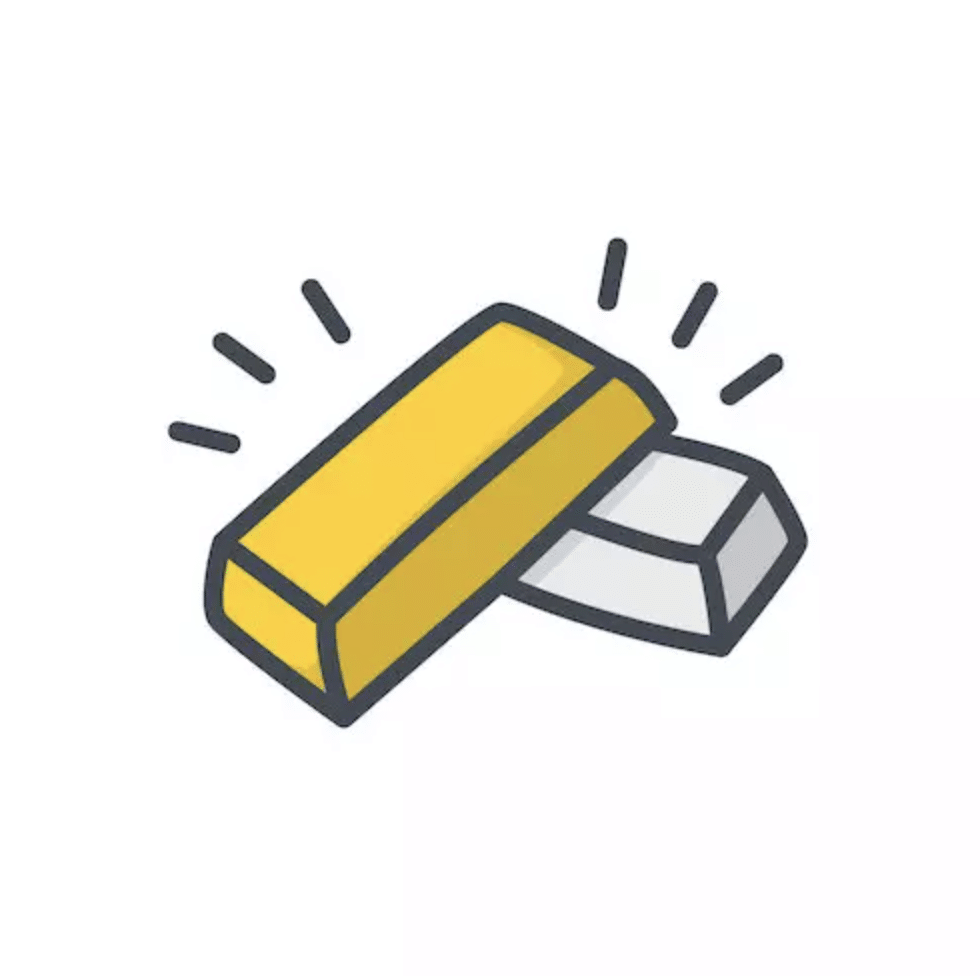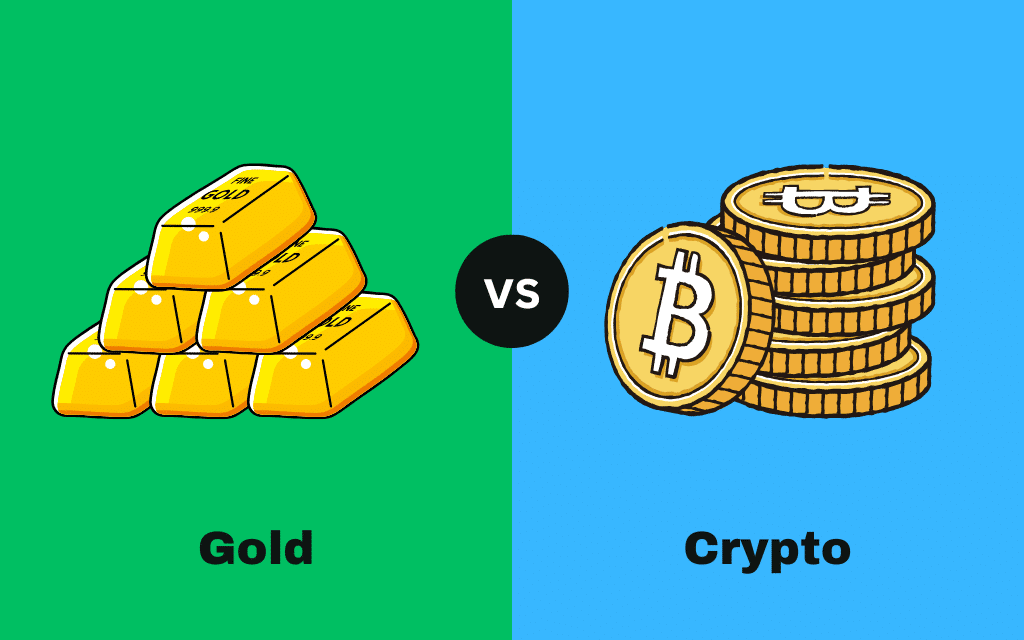Key Takeaways
- A silver IRA is a self-directed retirement account that holds IRS-approved physical silver.
- IRA-eligible silver must be at least 99.9% pure and in approved bullion coin or bar form.
- Silver IRAs provide diversification and inflation protection but generate no income and carry storage and custodian fees.
- Opening a Silver IRA requires a self-directed account, an approved custodian, and storage in a licensed depository.
A silver IRA is a tax-advantaged account that allows you to invest in physical silver for retirement. While there are some tax benefits, not all silver qualifies for inclusion in a silver IRA.
When considering a silver IRA, it is crucial to choose a reputable company to handle your investment.
Investors should verify that the company is registered with regulatory authorities such as the Financial Industry Regulatory Authority (FINRA) and the SEC to ensure compliance and transparency.
Noble Gold Investments is an example of a reputable company in the silver IRA space, known for its strong industry reputation and positive customer reviews.
Read more to learn how silver IRAs work and what to consider before investing.
What is a silver IRA?

A silver IRA is a type of self-directed IRA account where you can invest in silver coins or bars as part of your retirement savings.
The account allows you to invest in silver as a way to diversify your portfolio and hedge against volatility in the market.
Self-directed IRAs can also hold other precious metals such as gold, platinum, and palladium, providing further diversification beyond just silver.
In 2025, you can contribute up to $7,000 ($8,000 if you’re over 50) in a tax-benefitted IRA account.
How a Silver IRA Works
A silver IRA lets you invest in physical silver as part of your retirement savings. It works a lot like a traditional IRA, but instead of stocks or mutual funds, you’re holding silver.
Getting started
You can roll over an existing retirement account—like a 401(k) or traditional IRA—into a silver IRA.
Just make sure the rollover is completed within 60 days to avoid taxes or penalties. Your IRA custodian will help you with the paperwork.
Storage options
Your silver must be stored in an IRS-approved depository, not at home.
You can choose:
- Segregated storage, which keeps your silver separate from others.
- Unsegregated storage, where your silver is stored with other investors’ metals (usually cheaper).
Tax benefits
Like other IRAs, silver IRAs offer tax-deferred growth. You don’t pay taxes on gains until you withdraw, usually after age 59½.
If you have a Roth silver IRA, your withdrawals can be tax-free.
Taking distributions
When you’re ready to take money out, you can:
- Take physical possession of your silver, then sell it for cash
- Or have your custodian help you sell it directly
Withdrawals before age 59½ come with a 10% early withdrawal penalty, plus regular income taxes on the amount.
Types of Silver IRAs
While silver offers a tangible investment option for retirement, there are several different types of accounts you can choose, each with their own tax benefits.
To contribute to a silver IRA, you must have taxable income, as required by IRS regulations.
Traditional silver IRA
A traditional silver IRA is the most common type of silver IRA. It’s a self-directed IRA where you can invest in physical silver, like coins or bars, instead of stocks or bonds.
Contributions are tax deductible and the earnings grow tax-free until you withdraw them. Once you make a withdrawal, it’s taxed as ordinary income in retirement.
You will need to pay tax on distributions from a traditional silver IRA, so it’s important to understand the tax implications before making withdrawals.
A traditional silver IRA is set up with a custodian that specializes in precious metals and physical silver is stored at a depository on your behalf until you’re ready to withdraw it.
Roth Silver IRA
A Roth IRA is another type of self-directed account that holds physical silver. Instead of making tax deductible contributions, these accounts are made with post-tax dollars, meaning you’ve already paid taxes on it.
Silver in Roth accounts appreciates tax-free and when you’re ready to make withdrawals in retirement, your withdrawals will be tax-free too.
Roth accounts are good for individuals who want tax-free growth and who expect to be in a higher tax bracket later on in life.
Roth silver IRAs offer the same tax benefits and withdrawal rules as other Roth IRAs, including tax-free qualified withdrawals and similar contribution limits and income requirements.
SEP Silver IRA
A SEP IRA is designed for small business owners or self-employed individuals, allowing them to contribute to retirement accounts for themselves and employees. A self-directed SEP IRA account can hold physical silver.
Contributions are tax-deductible and earnings are tax-deferred, taxed as ordinary income upon withdrawal. SEP IRAs have higher contribution limits.
In 2025, up to 25% of compensation or $70,000 for 2025, whichever is less can be contributed. Employers make contributions to SEP IRAs directly without employee contributions.
Pros & Cons
A silver IRA can help you protect your wealth and offers increased diversification in your portfolio, but there are some things to consider before investing in a silver IRA.
Before proceeding, determine if a silver IRA fits your financial goals and risk tolerance.
Pros
- Diversification: A silver IRA spreads risk by adding an asset to your portfolio that isn’t correlated with stocks and bonds. If the stock market tanks, silver can help stabilize your overall portfolio.
- Inflation gedge: Silver often rises in price when the dollar weakens. This can help protect your savings from losing purchasing power over time, preserving more of it for when you need it in retirement.
- Tax benefits: Silver IRAs offer tax deductible contributions and tax-deferred growth until retirement. Roth silver IRAs allow tax-free withdrawals in retirement.
- Physical asset ownership: Holding silver, even if it’s stored in a depository, is a physical asset you own. Even if other assets go bust, silver has applications that help it preserve its value.
Cons
- Higher fees: Unlike traditional IRAs, self-directed IRAs come with extra costs like setup, storage, transaction, and account fees. Ongoing expenses such as insurance for storing physical silver can further reduce your returns, especially if silver prices don’t rise enough to offset these additional costs.
- Price volatility: Silver prices can fluctuate. If you need to liquidate your silver during a downturn, you could incur losses. This is a risk that you typically won’t have to consider with more traditional assets like bonds.
- Liquidity issues: To liquidate your silver, you need to find a buyer or dealer who is willing to purchase it. This can take longer than other assets and could be more of a hassle than it’s worth if you need quick access to cash.
What is IRA approved silver?
IRA-approved silver is silver that meets strict IRS criteria. It must be made of 99.9% fine silver or higher and be produced by a national government mint or accredited refiner.
Silver stored in a silver IRA is valued for its precious metal content, rather than subjective artistic value.
Examples of IRA-approved silver include:
- American Silver Eagle coin produced by the U.S. Mint
- Canadian Silver Maple leaf coin produced by the Royal Canadian Mint
- Australian Silver Kangaroo coin produced by the Perth Mint
- Austrian Silver Philharmonic coin produced by the Austrian Mint
- British Silver Britannia coin produced by the Royal Mint
You can also purchase silver bars offered in a variety of weights. These include bars produced by PAMP Suisse, Johnson Matthey, and the Royal Canadian Mint.
IRA approved silver must be stored in an IRS-compliant depository. Storage facilities include Texas Precious Metals Depository in Texas and International Depository Services in Delaware.
What are the silver IRA tax rules?
Investing in a silver IRA comes with tax benefits but there are specific rules you must follow:
- Tax-deferred or Tax-free growth: Contributions may be tax-deductible depending on your income and filing status. Investments grow tax-deferred with taxes paid on withdrawals as ordinary income. Capital gains taxes are also deferred or avoided in a silver IRA, depending on whether you have a traditional or Roth account.
- Contribution limits: In 2025, individuals can contribute up to $7,000 in a silver IRA ($8,000 if you are 50 or older). This applies to all IRAs you have, including a silver IRA.
- Rollover and transfer rules: Funds from an existing IRA or 401(k) can be rolled over into a silver IRA tax-free if completed within 60 days. Direct transfers between custodians are tax-free and reduce the risk of not completing the transfer in the required time. Improper rollovers trigger taxes and penalties.
- Storage requirements: Silver held in an IRA must be kept in an IRS-approved depository, not at home or in a personal safe. Taking possession of your silver makes it taxable immediately.
- Distribution rules: Withdrawals made before age 59½ incur a 10% early withdrawal penalty plus taxes unless you qualify for an exception.
- Required Minimum Distributions: For traditional silver IRAs, RMDs begin at age 73. You’ll have to withdraw a portion of your savings based on your account value and projected life expectancy. Roth silver IRAs have no RMDs.
- Prohibited transactions: You can’t borrow IRA silver or take loans against the value of your account.
Unlike some other investment assets, silver investments do not generate dividends or interest, so your returns rely solely on price appreciation.
While self-directed IRAs come with more freedom to invest in assets like silver, they also put more responsibility on you, the investor, to comply with all of the rules.
Choose a custodian that makes compliance easy to follow to help you avoid unnecessary taxes and penalties.
How to Set up a silver IRA account
Setting up a silver IRA account is a straightforward process that allows you to invest in physical silver for your retirement.
Unlike traditional IRAs, you’ll need to set up a SDIRA with a custodian.
Here’s how to set up a silver IRA account:
- Choose a custodian: Find an IRS-approved custodian who specializes in precious metal IRAs. Look for reputable companies with transparent fees and good reviews.
- Open a self-directed IRA account: Once you’ve found a custodian, complete their application process to open an account. You’ll need to choose the type of account you want to open and provide information to verify your identity.
- Fund the account: You can fund your account by making a direct contribution, rollover, or a transfer from an existing custodian. Work with your custodian to adhere to all IRS guidelines if you opt for a rollover.
- Select IRA-approved silver: Purchase silver that meets IRS purity standards. Work with your custodian to identify a reputable precious metals dealer that has transparent policies and competitive market prices.
- Store you silver: Approve the purchase through your custodian who will buy it on your behalf and transfer it to an IRS-approved depository.
- Manage your investment: Keep track of your account through your custodian’s online account portal. Adjust your holdings over time to align with your goals.
Before opening a silver IRA, it is recommended to consult a financial advisor.
A financial advisor can help you understand the advantages, risks, and whether a silver IRA is suitable for your overall retirement planning strategy.
When choosing a custodian, verify that the company is registered to handle securities and complies with all relevant regulations.
Ensuring your custodian prioritizes security and regulatory compliance helps protect your investment and ensures you are working with a legitimate platform.
Depending on your funding method, setting up a silver IRA can take anywhere from one to three weeks.
3 Best Silver IRA Companies
When choosing a silver IRA company, there are plenty of options available in the industry.
You want to make sure that you choose a company that offers competitive rates, buyback guarantee, and highly rated on 3rd party review websites like BBB and Trustpilot.
Based on my research, below are the top 3 best silver IRA companies in the industry.
Noble Gold Investments
Noble Gold offers a streamlined silver IRA setup with low minimum investment requirements and a strong focus on customer education.
They provide secure, segregated storage options in the U.S., including a Texas-based depository.
Noble Gold Investments is a leading provider of IRA approved precious metal investments.
Goldco
Goldco is known for its excellent customer support and comprehensive guidance throughout the silver IRA rollover process.
They offer a wide range of IRS-approved silver coins and have a strong reputation for helping clients protect their retirement savings from inflation.
Augusta Precious Metals
Augusta stands out for its white-glove service and one-on-one educational approach tailored to retirement investors.
Their transparent pricing, lifetime support, and commitment to client education make them a trusted choice for silver IRAs.
Is a silver IRA a good retirement investment?
Silver IRAs can be a strategic way to save for retirement. These and other alternative investments were traditionally available only to high net worth individuals, but are now accessible to a broader range of investors.
They offer diversification, allowing you to hedge against inflation and guard your wealth against market volatility.
Unlike traditional brokerage accounts, silver IRAs come with higher fees, storage requirements, and price fluctuations that you’ll want to be mindful of when you’re ready to liquidate your savings.
Before opening an account, research custodians to learn more about the fees and risks involved.
That way you’re making an informed decision, balancing the benefits against the risks that could pop up down the road.
FAQs
Is a silver IRA tax-free?
A silver IRA isn’t tax-free, but it offers tax advantages like tax-deferred growth or tax-free withdrawals, depending on the account type.
How much can I invest in a silver IRA?
You can contribute up to $7,000 per year ($8,000 if you’re 50 or older), but rollovers from other retirement accounts have no limit.
What are the different fees associated with setting up a silver IRA?
Silver IRAs usually include setup, annual maintenance, storage, and selling fees, which can add up to a few hundred dollars per year.
How do I convert my 401(k) to silver without a penalty?
To avoid penalties, open a self-directed silver IRA and request a direct rollover from your 401(k); then use the funds to buy IRS-approved silver stored in an approved facility.





